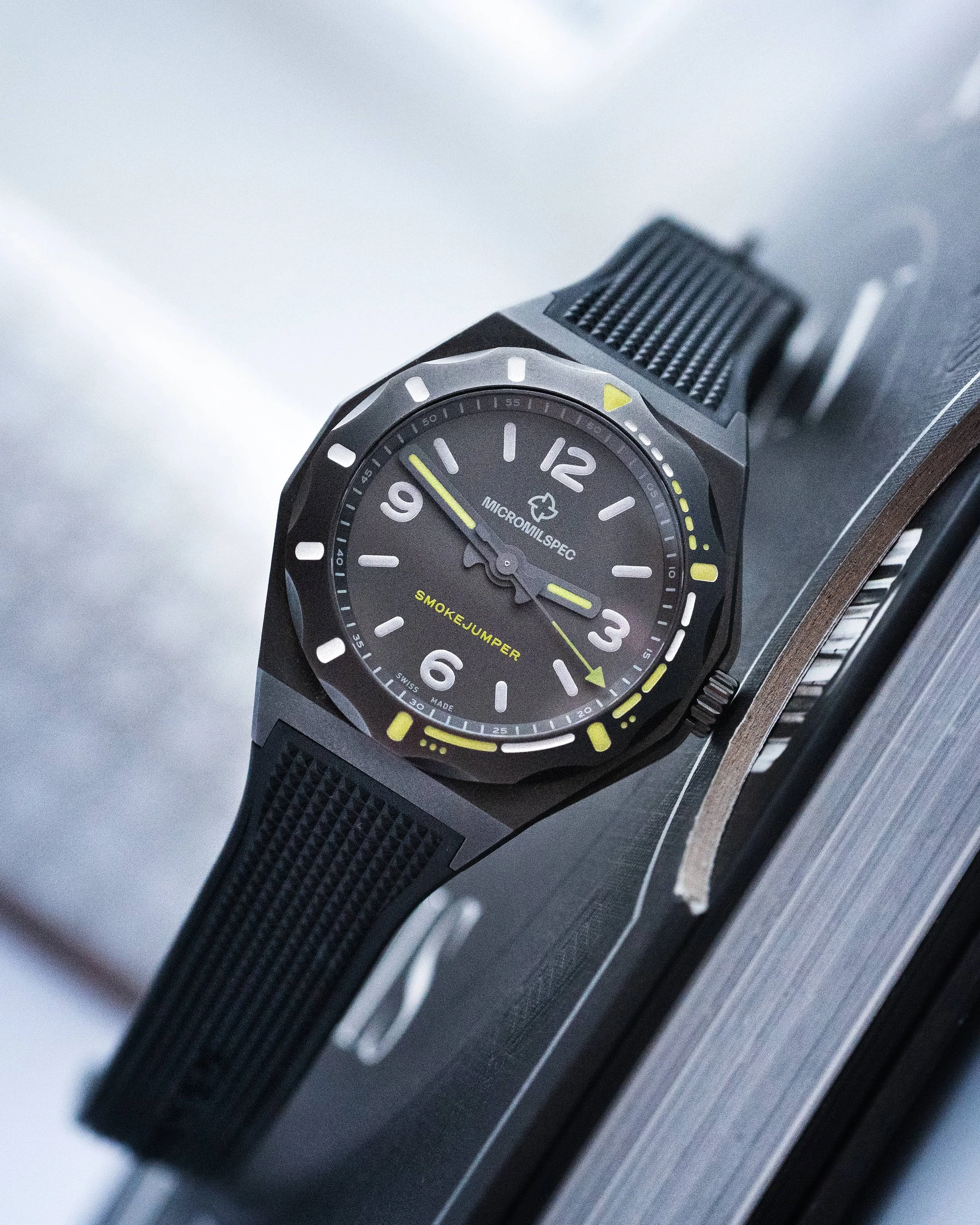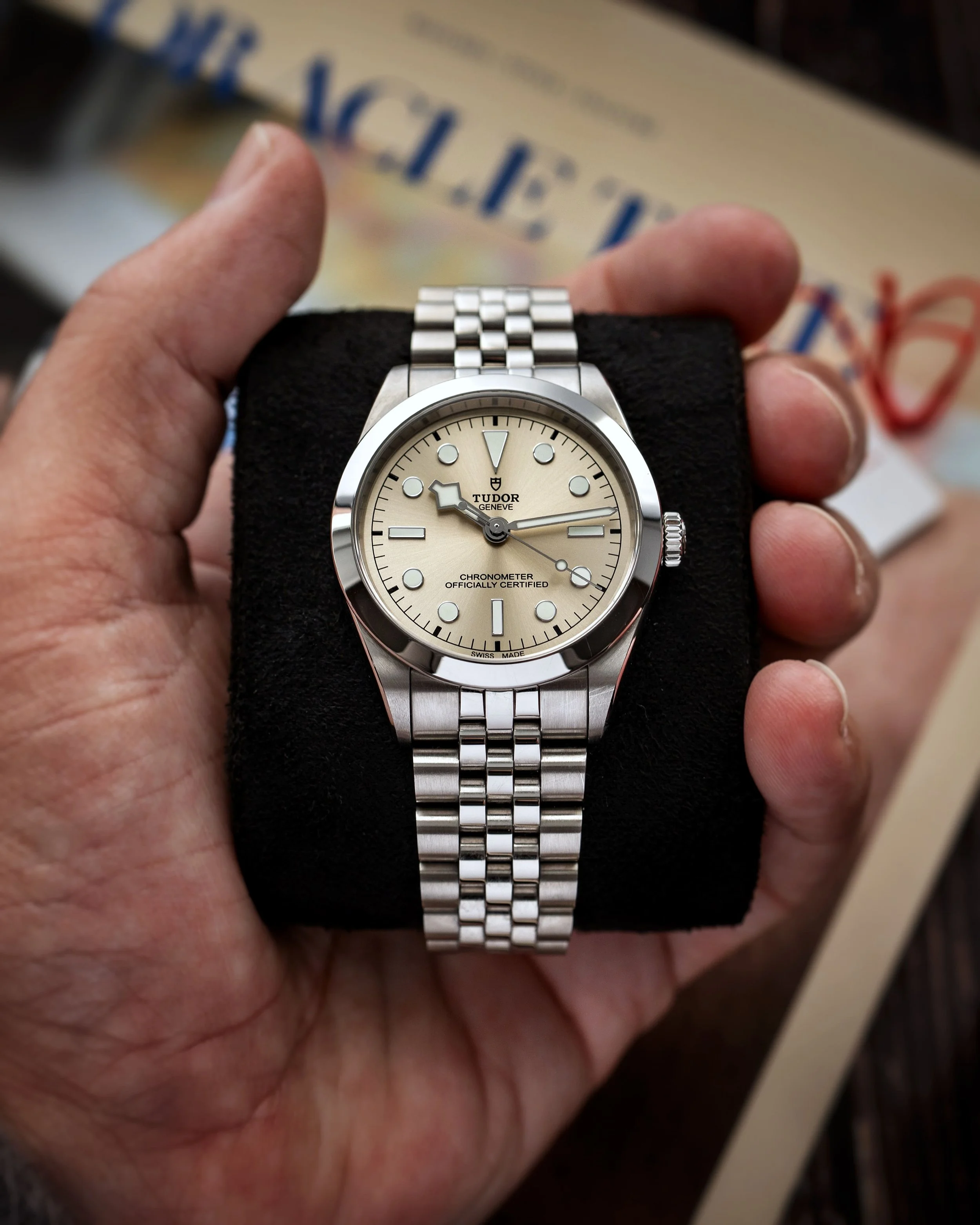The History of IWC Watches and Their Impact on the Watch Industry
IWC boutique Battersea
This article may contain affiliate links, which means if you choose to purchase a product using the link, I may get a small commission. This is at no additional cost to you and enables me to keep writing reviews of watches and products I genuinely think you will enjoy or find useful.
IWC (International Watch Company) was founded in 1868 by American watchmaker Florentine Ariosto Jones, who had a vision of combining the precision of Swiss watchmaking with the engineering expertise of the American watch industry. Jones chose to set up his workshop in the Swiss town of Schaffhausen, where he could tap into the skills of local watchmakers and take advantage of the region's abundant hydropower to run his machinery.
IWC's Innovation and Technological Advancement
One of the defining characteristics of IWC watches is their commitment to innovation and technological advancement. For example, in 1885, IWC introduced the Pallweber pocket watch, which was one of the first watches to use a digital display to show the time. This revolutionary design was quickly adopted by other watchmakers, and it paved the way for the development of modern digital watches.
Another important milestone in IWC's history was the creation of the Portugieser line of watches in the 1930s. These oversized timepieces were designed to meet the needs of sailors and navigators, who required highly accurate and legible watches for use at sea. The Portugieser quickly became one of IWC's most popular and iconic designs, and it remains a favourite among collectors today.
In the post-war era, IWC continued to push the boundaries of watchmaking with its innovative designs and cutting-edge technology. For example, in 1955, the company introduced the Ingenieur, which was designed to be a highly accurate and durable watch for engineers and scientists. The Ingenieur featured a shock-resistant movement and a unique soft iron case that protected the watch from magnetic fields, making it ideal for use in scientific and industrial settings.
In the 1960s and 1970s, IWC made further strides in watch technology by introducing its Aquatimer dive watch and the first titanium watch case. The Aquatimer was one of the first dive watches to feature a rotating bezel for measuring dive time, and it quickly became a favourite among professional divers and diving enthusiasts. Meanwhile, the use of titanium in watchmaking marked a significant breakthrough, as the material was lightweight, durable, and highly corrosion-resistant.
In recent years, IWC has continued to innovate with its designs, incorporating new materials and technologies to create functional and stylish watches. For example, the company's Big Pilot's Watch features a large, easy-to-read dial and a rugged case that is water-resistant to 60 meters. Meanwhile, the Portofino line of watches offers a more classic and refined aesthetic, with slim profiles and elegant designs that are perfect for formal occasions.
IWC's Social Responsibility and Sustainability
In addition to its technical achievements, IWC has significantly impacted the watch industry through its commitment to social responsibility and sustainability. The company is a Responsible Jewellery Council member and committed to sourcing its materials ethically and environmentally friendly. Additionally, IWC has partnered with several charitable organisations, including the Antoine de Saint-Exupéry Youth Foundation and the Laureus Sport for Good Foundation, to support causes such as education, youth development, and sports programs for disadvantaged children.
IWC has also been a leader in promoting gender equality and diversity in the watch industry. In 2019, the company launched its "IWC Equalizer" initiative, which seeks to increase the representation of women in leadership roles and promote gender equality within the company. IWC has partnered with several women's organisations, including the Women's Forum for the Economy and Society and the 100 Women in Finance network.
IWC's Design Aesthetic
In terms of design, IWC has become known for its sleek, modern aesthetic, with clean lines and minimalist dials. The company's use of materials such as titanium, ceramic, and carbon fibre has also helped to set it apart from other luxury watch brands.
Overall, IWC has profoundly impacted the watch industry over the past century and a half. Its commitment to innovation, technological advancement, and social responsibility has helped to make it one of the world’s most respected and admired watch brands. With a rich history and dedication to quality and craftsmanship, IWC will continue impacting the watch industry for many years to come.
Notable Watches From IWC
IWC Portugieser
The Portugieser line of watches is one of IWC's most iconic and popular designs. First introduced in the 1930s, these oversized timepieces were designed to meet the needs of sailors and navigators who required highly accurate and legible watches for sea use. The original Portugieser had a pocket watch movement modified for use in a wristwatch, quickly becoming popular among collectors and watch enthusiasts.
Over the years, IWC has continued to develop and refine the Portugieser line, introducing new complications and materials to keep the design fresh and relevant. Today, the Portugieser remains one of IWC's flagship models, with an instantly recognisable distinctive look and feel.
IWC Big Pilot's Watch
The Big Pilot's Watch is another iconic IWC design, with a large, easy-to-read dial and a rugged case that is water-resistant to 60 meters. The original Big Pilot's Watch was designed in the 1940s for use by German pilots during World War II, and it featured a large crown that could be easily adjusted while wearing gloves.
Today, the Big Pilot's Watch is a favourite among aviation enthusiasts and collectors, with a timeless design that pays tribute to the history of flight.
IWC Aquatimer
The Aquatimer is IWC's dive watch, designed for use by professional divers and diving enthusiasts. The original Aquatimer was introduced in the 1960s and featured a rotating bezel for measuring dive time, as well as a unique internal bezel that could be controlled by a separate crown.
IWC Aquatimer 1967
Over the years, IWC has continued to develop and refine the Aquatimer, introducing new materials and technologies to make it even more durable and reliable. Today, the Aquatimer remains one of the most popular dive watches on the market, with a distinctive look and feel that is instantly recognizable.
IWC Ingenieur
The Ingenieur was first introduced in 1955 and was designed to be a highly accurate and durable watch for engineers and scientists. The original Ingenieur featured a shock-resistant movement and a unique soft iron case that protected the watch from magnetic fields, making it ideal for use in scientific and industrial settings.
Over the years, IWC has continued to develop and refine the Ingenieur, introducing new materials and technologies to make it even more durable and reliable. Today, the Ingenieur remains a favourite among collectors and watch enthusiasts, with a distinctive look and feel that is instantly recognizable.
IWC Portofino
The Portofino line of watches offers a more classic and refined aesthetic, with slim profiles and elegant designs that are perfect for formal occasions. The original Portofino was introduced in the 1980s and featured a simple, understated design that emphasised elegance and sophistication.
Over the years, IWC has continued to develop and refine the Portofino, introducing new complications and materials to make it even more versatile and stylish. Today, the Portofino remains one of the most popular dress watches on the market, with a timeless design that is sure to impress.
Commonly asked questions about IWC
What does IWC stand for? IWC stands for International Watch Company, a luxury Swiss watch manufacturer based in Schaffhausen, Switzerland.
When was IWC founded? IWC was founded in 1868 by an American watchmaker named Florentine Ariosto Jones.
What is IWC known for? IWC is known for creating high-quality, luxury watches and has a reputation for precision and meticulous craftsmanship. Notable models include the IWC Portugieser, IWC Pilot, and IWC Da Vinci.
What movements does IWC use? IWC uses both in-house movements and modified ETA movements in their watches. They are known for the craftsmanship and quality of their in-house movements.
Are IWC watches a good investment? As with most luxury watches, IWC watches can be a good investment. However, it's important to note that not all models appreciate in value. Factors such as rarity, condition, and demand can affect a watch's resale value.
Where are IWC watches made? IWC watches are made in Schaffhausen, Switzerland. The company has been based there since its inception in 1868.
How often should I service my IWC watch? IWC recommends having your watch serviced every 2 to 5 years, depending on the model and its age.
Specification comparison of popular IWC models
| Model | Case Material | Case Diameter | Movement | Water Resistance |
|---|---|---|---|---|
| IWC Portugieser Automatic | Stainless Steel | 42.3mm | Automatic, Calibre 52010 | 30m |
| IWC Pilot's Watch Mark XVIII | Stainless Steel | 40mm | Automatic, Calibre 35111 | 60m |
| IWC Portofino Automatic | Stainless Steel | 40mm | Automatic, Calibre 30110 | 30m |
| IWC Aquatimer Automatic | Stainless Steel | 42mm | Automatic, Calibre 30120 | 300m |
| IWC Da Vinci Automatic | Stainless Steel | 40mm | Automatic, Calibre 35111 | 30m |
| IWC Ingenieur Automatic | Stainless Steel | 40mm | Automatic, Calibre 35111 | 120m |
| IWC Big Pilot | Stainless Steel | 46mm | Automatic, Calibre 52110 | 60m |
| IWC Pilot's Watch Chronograph | Stainless Steel | 43mm | Automatic, Calibre 79320 | 60m |
Conclusion
IWC has a rich history of innovation, technological advancement, and social responsibility, making it one of the world’s most respected and admired watch brands. From its early days as a pioneer of digital watches to its more recent focus on sustainability and gender equality, IWC has remained at the forefront of the watch industry, constantly pushing the boundaries of what is possible in terms of design, materials, and technology.
Today, IWC continues to innovate and create stylish and functional watches, with a commitment to sustainability and social responsibility that is a testament to the company's enduring values. Whether you're a collector, a watch enthusiast, or simply someone who appreciates fine craftsmanship and design, IWC watches are sure to impress with their quality, attention to detail, and timeless appeal.
To learn more about IWC and it range of watches you can find them here at www.IWC.com












